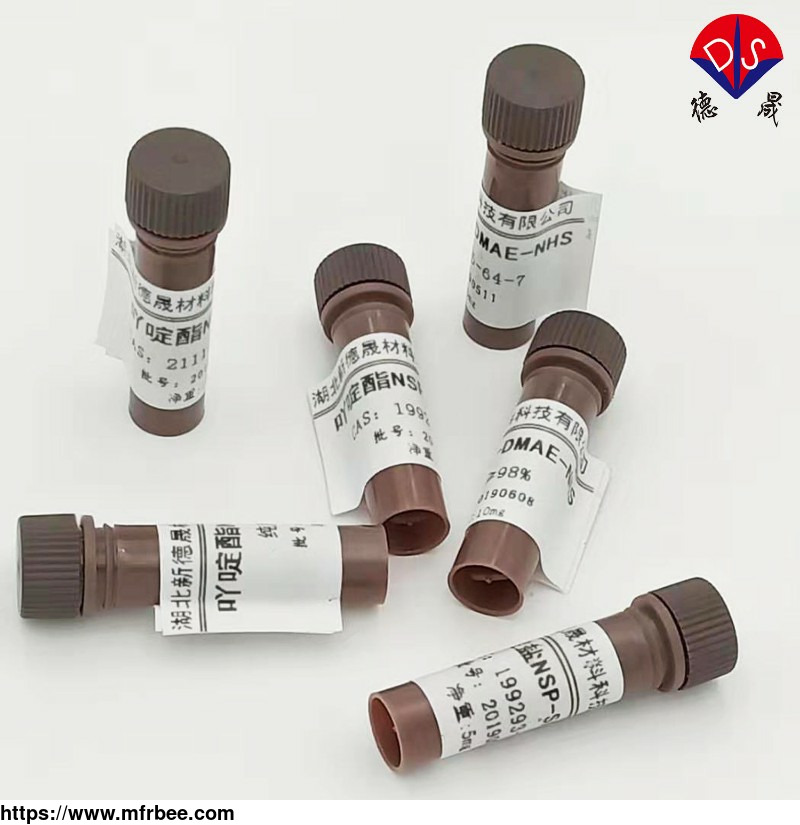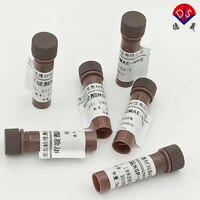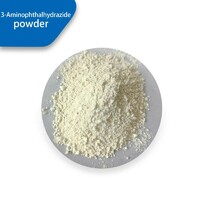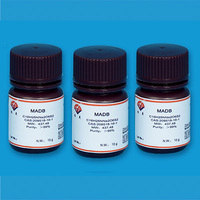Acridinium Ester DMAE-NHS
Product Quick Detail
- Place Of Origin
- China (Mainland)
- Minimum Order
- 100
- FOB Price
- USD $14.00 / Piece
- Packaging
- 50mg/bottle
- Delivery
- 15 Days
Specifications
Acridine ester DMAE-NHS is a commonly used fluorescent labeling reagent for experiments and research in the fields of biochemistry and molecular biology. However, its thermal stability is an important factor affecting its experimental results. According to research, there is a relationship between the thermal stability of acridine ester DMAE-NHS and pH value and temperature. So, what is the relationship? Let's take a look together below.
1、 The relationship between thermal stability and pH value
The thermal stability of acridine ester DMAE-NHS is to some extent affected by the pH value of the solution. Research has shown that at room temperature, acridine ester DMAE-NHS is relatively stable in PB buffer solutions with pH values of 5.8, 7.0, and 8.0. After 16 days of storage, the luminescence activity at various pH values decreased by 1.6%, 3.6%, and 8.3%, respectively. This indicates that under neutral and weakly alkaline conditions, the thermal stability of acridine ester DMAE-NHS is high, and the degradation of luminescent activity is relatively slow.
2、 The relationship between thermal stability and temperature
Temperature is another important factor affecting the thermal stability of acridine ester DMAE-NHS. At 37 ℃, the luminescence activity of acridine ester DMAE-NHS decreased significantly after 16 days in PB buffer solutions with different pH values. Specifically, in buffer solutions with pH values of 5.8, 7.0, and 8.0, the luminescence activity decreased by 8.9%, 22%, and 42%, respectively. This indicates that as the temperature increases, the thermal stability of acridine ester DMAE-NHS significantly decreases, and the degradation rate of luminescent activity accelerates.
3、 Reasons for decreased thermal stability
The main reason for the decrease in thermal stability of acridine ester DMAE-NHS is due to hydrolysis reaction. In alkaline environments, hydrolysis reactions are more likely to occur, so under high pH conditions, the hydrolysis rate of acridine ester DMAE-NHS accelerates, leading to a decrease in luminescence activity. In addition, increasing the temperature can also promote the hydrolysis reaction, so under high temperature conditions, the hydrolysis rate is accelerated and the thermal stability is reduced.
The thermal stability of acridine ester DMAE-NHS is influenced by both pH and temperature. Under neutral to slightly alkaline conditions, its thermal stability is relatively high, while under high temperature and alkaline environments, its thermal stability is significantly reduced. When using acridine ester DMAE-NHS, researchers should choose appropriate pH and temperature conditions according to the needs of the experiment to ensure the accuracy and stability of the experimental results.
As a supplier of luminescent reagents, Desheng can provide raw material powders with a purity of up to 98%. It is not only easy to prepare, but also has high luminescence rate, sensitive response, and favorable price. It is one of the products that many people are enthusiastic about choosing. If you are interested, please feel free to contact us at any time to make a purchase!
- Country: Afghanistan
- Business Type:
- Market:
- Founded Year:
- Address:
- Contact:Doris Yang










